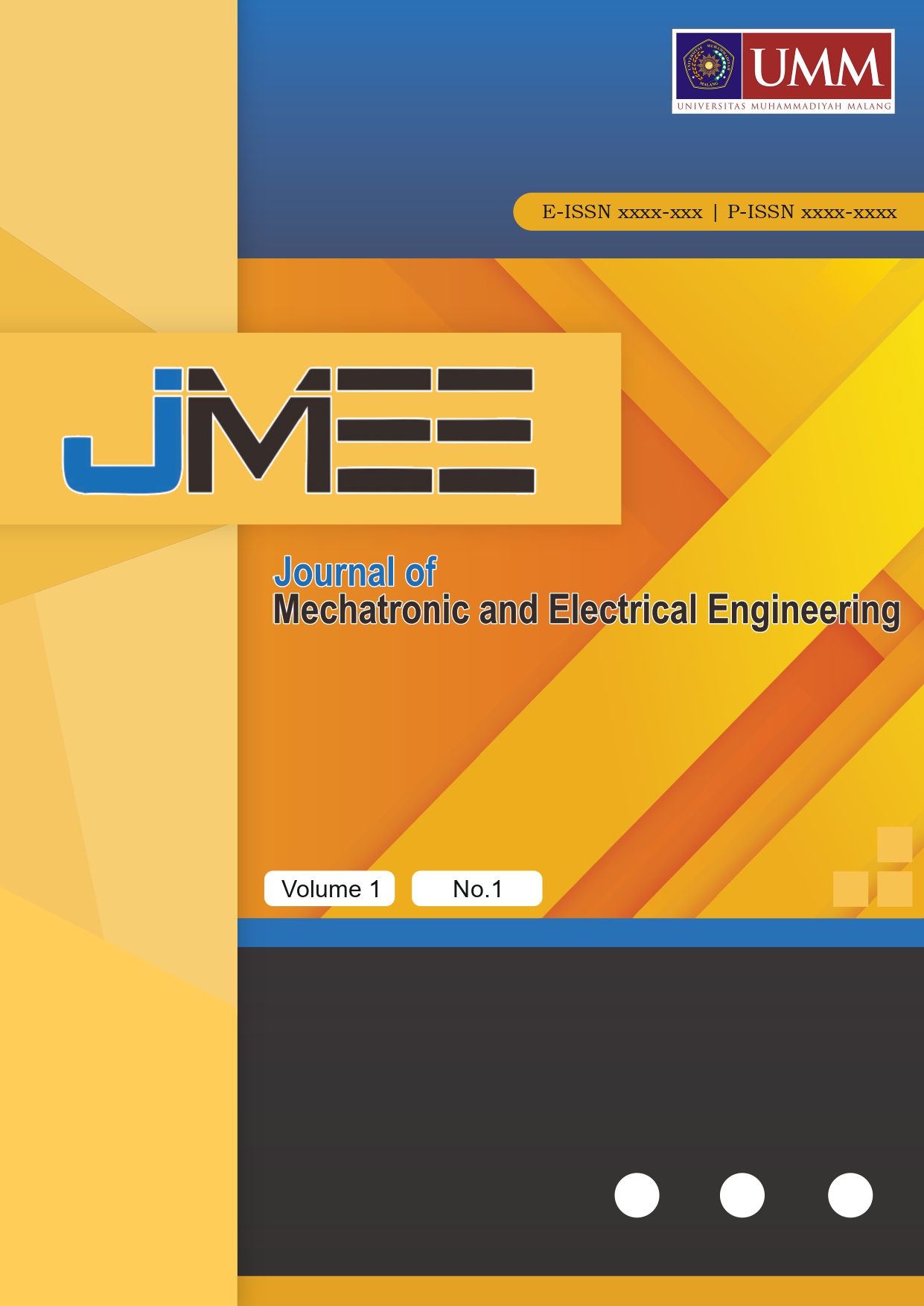Rancang Bangun Prototype Sistem Pendeteksi Jumlah Kendaraan Bermotor Menggunakan Sensor Ultrasonik Dan Load Cell Berbasis Mikrokontroler
Keywords:
Arduino Uno, Load Cell, Servo, Parking System, Ultrasonic SensorAbstract
Parking is a temporary stop that has been provided for types of vehicles. Along with the development of increasingly modern times, the use of private cars as a means of transportation has become commonplace. Private vehicle users who want to park are not well informed about the state of the parking area. Because there is no information about the availability of empty parking spaces. With a system that provides information on the entry and exit of vehicles, it is hoped that it can help and provide solutions to motorists in finding locations that are still empty. For the parking lot provider it makes it easy to take action with an information system regarding the number of entries and exits if the parking lot is full using the Karnaugh-map method. The results of the load cell sensor calibration using the linear regression method were successful, the R value was 1 and Sx was 9%. From the classification of motorbikes and cars, each consists of light, medium and heavy ultrasonic sensor programming successfully calculates and differentiates the number of vehicles between motorbikes and cars by using the selection.
Downloads
References
Afandi ,Agus, “Sistem Kontrol Parker Otomatis Menggunakan Mikrokontroller”, Surabaya: Universitas Kristen Petra, 2011.
Budiharto, Widodo, “Panduan Praktikum Mikrokontroller AVR ATmega 16”, Jakarta: Penerbit PT.Elex Media Komputindo, 2008
A. Achdian, “Rancang Bangun Alat Monitoring Parkir Nirkabel Berbasis Mikrokontroler ATMega8535”, Universitas Gunadarma.1-6, 2012.
Freeon Alkapon Imbiri, Nandang Taryana, Decy Nataliana, “Implementas isistem Perparkiran Otomatis Dengan Menentukan Posisi Parkir Berbasis Rfid”, Jurnal ELKOMIKA, Vol.4, No. 1, pp 31-46,2016
Bahrin, “Sistem kontrol Penerangan Menggunakan Arduino UNO pada Universitas Ichsan Gorontalo”, ILKOM Jurnal Ilmiah, Vol. 9, No. 3 , 2017
Prio Handoko, “Sistem Kendali Perangkat Elektronika Monolitikberbasis Arduino UNO R3”, SEMNASTEK, 2017
Fitri Puspasari, Imam Fahrurrozi, Trias Prima Satya, Galih Setyawan, Muhammad Rifqi Al Fauzan, Dan Estu Muhammad Dwi Admoko,”Sensor Ultrasonik HCSR04 Berbasis Arduino Due untuk Sistem Monitoring Ketinggian”, JURNAL FISIKA DAN APLIKASINYA, Vol. 2, 2019
Pambudi, Sucinata Agung, “Rancang Bangun Kendali Sistem Parkir Otomatis Menggunakan Sensor LDR Berbasis Mikrokontroler AT89S51”. Universitas Diponegoro, 2019
Priskila M.N.Manege, Elia Kendek Allo, Bahrun, “Rancang Bangun Timbangan Digital Dengan Kapasitas 20Kg Berbasis Microcontroller ATMega8535”, E-Journal Teknik Elektro dan Komputer, Vol.6, No.1, 2017.
Sarmidi, Sidik Ibnu Rahmat, ”Sistem Peringatan Dini Banjir Menggunakan Sensor Ultrasonik Berbasis Arduino Uno”, JUMANTAKA, Vol. 03,No. 01, 2019.
Sujarwata, “Pengendali Motor Servo Berbasis Mikrokontroler Basic Stamp 2Sx Untuk Mengembangkan Sistem Robotika”, ANGKASA, Vol. V, No. 1, 2013.
Downloads
Published
How to Cite
Issue
Section
License
Copyright (c) 2021 Journal of Mechatronic and Electrical Engineering

This work is licensed under a Creative Commons Attribution-ShareAlike 4.0 International License.
Authors who publish with Journal of Mechatronic and Electrical Engineering (JMEE) agree to the following terms:
- For all articles published in JMEE, copyright is retained by the authors. Authors give permission to the publisher to announce the work with conditions. When the manuscript is accepted for publication, the authors agree to automatic transfer of the publishing right to the publisher.
- Authors retain copyright and grant the journal right of first publication with the work simultaneously licensed under a Creative Commons Attribution-ShareAlike 4.0 International License that allows others to share the work with an acknowledgment of the work's authorship and initial publication in this journal.
- Authors are able to enter into separate, additional contractual arrangements for the non-exclusive distribution of the journal's published version of the work (e.g., post it to an institutional repository or publish it in a book), with an acknowledgment of its initial publication in this journal.
- Authors are permitted and encouraged to post their work online (e.g., in institutional repositories or on their website) prior to and during the submission process, as it can lead to productive exchanges, as well as earlier and greater citation of published work (See The Effect of Open Access).

This work is licensed under a Creative Commons Attribution-ShareAlike 4.0 International License.







